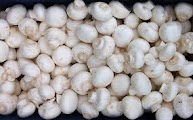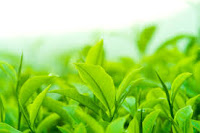The pomegranate originated in the region of modern-day Iran and has been cultivated since ancient times throughout the Mediterranean region and northern India. It was introduced into Spanish America in the late 16th century and California by Spanish settlers in 1769.
Today, it is widely cultivated throughout the Middle East and Caucasus region, north Africa and tropical Africa, the Indian subcontinent, Central Asia, the drier parts of southeast Asia, and parts of the Mediterranean Basin. It is also cultivated in parts of California and Arizona. In recent years, it has become more common in the commercial markets of Europe and the Western Hemisphere.
Nutrition
A 100-g serving of pomegranate seeds provides 12% of the Daily Value (DV) for vitamin C, 16% DV for vitamin K and 10% DV for folate (table).
Pomegranate seeds are an excellent source of dietary fiber (20% DV) which is entirely contained in the edible seeds. People who choose to discard the seeds forfeit nutritional benefits conveyed by the seed fiber and micronutrients.
Pomegranate seed oil contains punicic acid (65.3%), palmitic acid (4.8%), stearic acid (2.3%), oleic acid (6.3%), and linoleic acid (6.6%).
Pomegranate juice can be sweet or sour, but most fruits are moderate in taste, with sour notes from the acidic tannins
contained in the juice. Pomegranate juice has long been a popular drink
in Europe, the Middle East and is now widely distributed in the United
States and Canada.
Grenadine syrup long ago consisted of thickened and sweetened pomegranate juice, now is usually a sales name for a syrup based on various berries, citric acid, and food coloring, mainly used in cocktail mixing. In Europe, Bols still manufactures grenadine syrup with pomegranate.Before tomatoes, a New World fruit, arrived in the Middle East, pomegranate juice, molasses, and vinegar were widely used in many Iranian foods, and are still found in traditional recipes such as fesenjān, a thick sauce made from pomegranate juice and ground walnuts, usually spooned over duck or other poultry and rice, and in ash-e anar (pomegranate soup)
Pomegranate seeds are used as a spice known as anardana (from Persian: anar + dana, pomegranate + seed), most notably in Indian and Pakistani cuisine. Dried whole seeds can often be obtained in ethnic Indian subcontinent markets. These seeds are separated from the flesh, dried for 10–15 days, and used as an acidic agent for chutney and curry preparation. Ground anardana is also used, which results in a deeper flavoring in dishes and prevents the seeds from getting stuck in teeth. Seeds of the wild pomegranate variety known as daru from the Himalayas are regarded as quality sources for this spice.
Dried pomegranate seeds, found in some natural specialty food markets, still contain some residual water, maintaining a natural sweet and tart flavor. Dried seeds can be used in several culinary applications, such as trail mix, granola bars, or as a topping for salad, yogurt, or ice cream.
In the Caucasus, pomegranate is used mainly for juice. In Azerbaijan, a sauce from pomegranate juice narsharab, (from Persian: (a)nar + sharab, lit. "pomegranate wine") is usually served with fish or tika kabab. In Turkey, pomegranate sauce (Turkish: nar ekşisi) is used as a salad dressing, to marinate meat, or simply to drink straight. Pomegranate seeds are also used in salads and sometimes as garnish for desserts such as güllaç. Pomegranate syrup or molasses is used in muhammara, a roasted red pepper, walnut, and garlic spread popular in Syria and Turkey.
In Greece, pomegranate (Greek: ρόδι, rodi) is used in many recipes, including kollivozoumi, a creamy broth made from boiled wheat, pomegranates, and raisins, legume salad with wheat and pomegranate, traditional Middle Eastern lamb kebabs with pomegranate glaze, pomegranate eggplant relish, and avocado-pomegranate dip. Pomegranate is also made into a liqueur, and as a popular fruit confectionery used as ice cream topping, mixed with yogurt, or spread as jam on toast. In Cyprus and Greece, and among the Greek Orthodox Diaspora, ρόδι (Greek for pomegranate) is used to make koliva, a mixture of wheat, pomegranate seeds, sugar, almonds, and other seeds served at memorial services.
In Mexico, they are commonly used to adorn the traditional dish chiles en nogada, representing the red of the Mexican flag in the dish which evokes the green (poblano pepper), white (nogada sauce) and red (pomegranate seeds) tricolor.
The red color of juice can be attributed to anthocyanins, such as delphinidin, cyanidin, and pelargonidin glycosides. Generally, an increase in juice pigmentation occurs during fruit ripening.The phenolic content of pomegranate juice is adversely affected by processing and pasteurization techniques.
Related Articles
Pomegranate seeds are an excellent source of dietary fiber (20% DV) which is entirely contained in the edible seeds. People who choose to discard the seeds forfeit nutritional benefits conveyed by the seed fiber and micronutrients.
Pomegranate seed oil contains punicic acid (65.3%), palmitic acid (4.8%), stearic acid (2.3%), oleic acid (6.3%), and linoleic acid (6.6%).
Health Benefits
After the pomegranate is opened by scoring it with a knife and breaking it open, the seeds are separated from the peel and internal white pulp membranes. Separating the seeds is easier in a bowl of water because the seeds sink and the inedible pulp floats. Freezing the entire fruit also makes it easier to separate. Another effective way of quickly harvesting the seeds is to cut the pomegranate in half, score each half of the exterior rind four to six times, hold the pomegranate half over a bowl, and smack the rind with a large spoon. The seeds should eject from the pomegranate directly into the bowl, leaving only a dozen or more deeply embedded seeds to remove. The entire seed is consumed raw, though the watery, tasty sarcotesta is the desired part. The taste differs depending on the variety or cultivar of pomegranate and its ripeness.
Grenadine syrup long ago consisted of thickened and sweetened pomegranate juice, now is usually a sales name for a syrup based on various berries, citric acid, and food coloring, mainly used in cocktail mixing. In Europe, Bols still manufactures grenadine syrup with pomegranate.Before tomatoes, a New World fruit, arrived in the Middle East, pomegranate juice, molasses, and vinegar were widely used in many Iranian foods, and are still found in traditional recipes such as fesenjān, a thick sauce made from pomegranate juice and ground walnuts, usually spooned over duck or other poultry and rice, and in ash-e anar (pomegranate soup)
Pomegranate seeds are used as a spice known as anardana (from Persian: anar + dana, pomegranate + seed), most notably in Indian and Pakistani cuisine. Dried whole seeds can often be obtained in ethnic Indian subcontinent markets. These seeds are separated from the flesh, dried for 10–15 days, and used as an acidic agent for chutney and curry preparation. Ground anardana is also used, which results in a deeper flavoring in dishes and prevents the seeds from getting stuck in teeth. Seeds of the wild pomegranate variety known as daru from the Himalayas are regarded as quality sources for this spice.
Dried pomegranate seeds, found in some natural specialty food markets, still contain some residual water, maintaining a natural sweet and tart flavor. Dried seeds can be used in several culinary applications, such as trail mix, granola bars, or as a topping for salad, yogurt, or ice cream.
In the Caucasus, pomegranate is used mainly for juice. In Azerbaijan, a sauce from pomegranate juice narsharab, (from Persian: (a)nar + sharab, lit. "pomegranate wine") is usually served with fish or tika kabab. In Turkey, pomegranate sauce (Turkish: nar ekşisi) is used as a salad dressing, to marinate meat, or simply to drink straight. Pomegranate seeds are also used in salads and sometimes as garnish for desserts such as güllaç. Pomegranate syrup or molasses is used in muhammara, a roasted red pepper, walnut, and garlic spread popular in Syria and Turkey.
In Greece, pomegranate (Greek: ρόδι, rodi) is used in many recipes, including kollivozoumi, a creamy broth made from boiled wheat, pomegranates, and raisins, legume salad with wheat and pomegranate, traditional Middle Eastern lamb kebabs with pomegranate glaze, pomegranate eggplant relish, and avocado-pomegranate dip. Pomegranate is also made into a liqueur, and as a popular fruit confectionery used as ice cream topping, mixed with yogurt, or spread as jam on toast. In Cyprus and Greece, and among the Greek Orthodox Diaspora, ρόδι (Greek for pomegranate) is used to make koliva, a mixture of wheat, pomegranate seeds, sugar, almonds, and other seeds served at memorial services.
In Mexico, they are commonly used to adorn the traditional dish chiles en nogada, representing the red of the Mexican flag in the dish which evokes the green (poblano pepper), white (nogada sauce) and red (pomegranate seeds) tricolor.
The most abundant phytochemicals in pomegranate juice are polyphenols, including the hydrolyzable tannins called ellagitannins formed when ellagic acid and/or gallic acid binds with a carbohydrate to form pomegranate ellagitannins, also known as punicalagins.
The red color of juice can be attributed to anthocyanins, such as delphinidin, cyanidin, and pelargonidin glycosides. Generally, an increase in juice pigmentation occurs during fruit ripening.The phenolic content of pomegranate juice is adversely affected by processing and pasteurization techniques.
Compared to the pulp, the inedible pomegranate peel contains as much as three times the total amount of polyphenols, including condensed tannins, catechins, gallocatechins and prodelphinidins.The higher phenolic content of the peel yields extracts for use in dietary supplements and food preservatives.
Related Articles
 |
| Indian Gooseberry |
 |
| Mushrooms |









